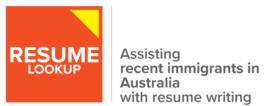Choosing the right resume template for an Australian-style resume: Top do’s and don’ts you need to know
Confused about choosing the right resume template for an Australian-style resume? Don’t worry, it’s a common challenge. But the good news is that there are easy do’s and don’ts to follow. With the right guidance, you can make your resume stand out and impress potential employers.
Key points
- A strong and well-written Australian-style resume is crucial when applying for a job in Australia
- Customise your Australian-style resume by highlighting relevant skills & experience, using industry keywords, and keeping it concise.
- Use keywords to get past ATS and make sure you’re a suitable candidate.
- Keep your Australian-style resume to two pages, prioritise relevant work/education, include transferable skills, and avoid general phrases. Customise it for each job, include quantifiable results, and proofread.
Applying an effective Australian-style resume template, you can tailor it to the job you’re applying for, highlighting relevant experience and skills. Be sure to use keywords that are commonly used in your industry and profession to make your resume template more visible to recruiters and hiring managers. It’s also important to keep your resume concise and easy to read, with clear headings and bullet points.
How to optimise an Australia-style resume template for your next role
> CV vs. Resume: Understanding the difference
> The purpose of a great resume template
> How long should your resume be?
> What NOT to include in your resume
> Writing a resume can be overwhelming, especially for immigrant job seekers
> Final tips to remember when writing your resume
In addition to impressing human readers, you also need to ensure your resume for an Australian job gets past initial screening algorithms, such as applicant tracking systems (ATS), which use relevant keywords to identify suitable candidates. By presenting a strong and clearly written CV that conveys all the relevant information, you can stand out from other candidates and increase your chances of getting hired.
CV vs. Resume: Understanding the difference
Today, many employers and job seekers use the terms ‘CV’ and ‘resume’ interchangeably. While traditionally, a CV was a comprehensive account of your entire professional life, up to six pages in length, and a resume was a summary, up to two pages, of your education, skills, and work experience.
However, in modern times, hiring companies expect a two-page summary of your career history, rendering the need for a lengthy CV redundant. As a result, people now use the two terms interchangeably, and whether you call it a ‘CV’ or ‘resume’ has no impact on your chances of reaching the interview shortlist.
The purpose of a great resume template
Your Australian-style resume is a way to show a recruiter or potential employer how your skills, experience, qualifications, and achievements match the requirements of a job. To grab their attention, your resume should be brief and highlight your most relevant accomplishments. If the reader thinks you’re a suitable candidate, they’ll invite you to an interview.
To impress them, you must demonstrate your skills, experience, and future potential. While a one-page resume is great if you can do that well, most resumes are around two pages long.
How long should my resume template be?
Your Australian-style resume should be around two pages long. If it’s much longer, cut out irrelevant information. For example, review your resume after checking the job requirements and see if you’ve included details of roles that don’t match the job in question.
If you have, simplify your language or remove that content entirely. Be concise on your resume, don’t use ten words to say something you can say in five. But in some cases, a one-page resume may be enough. The most important thing is to demonstrate your skills, experience, and potential.
If you can do that on one page, it’s great. However, most resumes are usually around two pages long on average.
What NOT to include in a resume
When crafting you resume template for the first time, it’s important to use common sense and not include every job you’ve ever had. Instead, focus on roles that are relevant to the job you’re applying for. Also, only include training that is relevant to the position.
Avoid listing hobbies or interests unless they are relevant to the job, and keep it brief. You don’t need to attach certificates or references unless requested. It’s unnecessary to create a creative resume unless you’re applying for a job in a creative field. Your skills and experience are what matter most, not the presentation of your resume.
Writing an Australian-style resume template can be overwhelming, especially for immigrant job seekers
A good resume template can make all the difference in getting your foot in the door as a starting point. To help you create a resume that stands out, we’ve compiled a list of the top resume do’s and don’ts.
- Add contact information: Include your full name, contact number, address, and a professional email address. Avoid using rude or silly email addresses, and do not include your date of birth or a photo of yourself.
- Prioritize education and work history: List your academic qualifications and work history in reverse chronological order, with relevant details for each job. Keep descriptions short and to the point.
- Include transferable skills: If you don’t have prior work experience, list your transferable skills, such as technical proficiency, teamwork, problem-solving, and communication skills. Provide evidence of these skills through classes, hobbies, sports, or volunteer work.
- Don’t lie or use exact general phrases: Avoid lying on your resume, as it is easy to verify during an interview. Instead, mention examples of when you’ve used required skills or attributes listed by the employer.
- Design your resume to stand out: Use a clean, simple yet unique design that grabs the employer’s attention. Avoid including pictures and clutter.
- Include a resume objective: State your professional goals and what kind of job you are looking for in a one-line summary. This helps the employer understand what they can expect from you as a candidate.
- Customize your resume: Don’t use a templated resume for each application. Instead, consider which skills are most important to the potential employer and give them maximum visibility on your resume.
Final tips to remember when crafting your resume template
Here are three final tips to help your resume stand out:
- Tailor your resume for each job application by highlighting relevant experiences and demonstrating genuine interest in the position.
- Include quantifiable results to support your claims and provide evidence of your value.
- Pay attention to detail and ensure your resume is error-free by proofreading for spelling, layout, and typing errors, as well as checking formatting and hyperlinks.
Don’t forget to sign up for our library of stories plus dos and don’ts on your resume writing, or check out our other resources for job search advice and insights.
Writing a great resume can be challenging, but with these tips, you can put your best foot forward. If you’re an immigrant job seeker, Resume Lookup can help you create a standout resume, cover letter, LinkedIn profile, and more.
Read more
Looking for more resources to help you with your job search? Check out our other helpful blog posts on writing effective resumes, effective cover letters, interviewing like a pro, and more!
👉 How to Choose the Right Resume Template
👉 Cover Letter: The Good and The Bad in 2023
👉 How to write a winning cover letter: Tips and tricks
👉 Professional Help with Resume and Australia’s Booming Job Market




